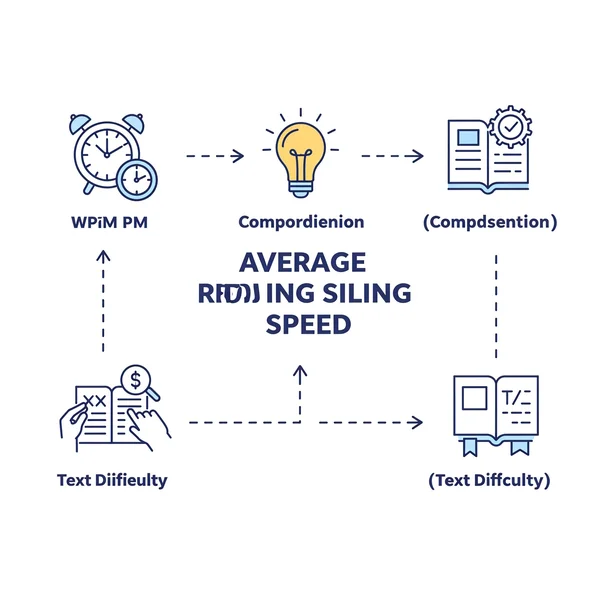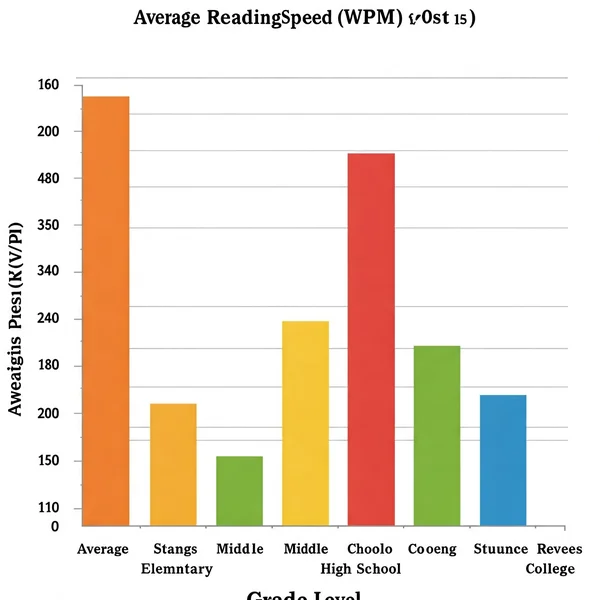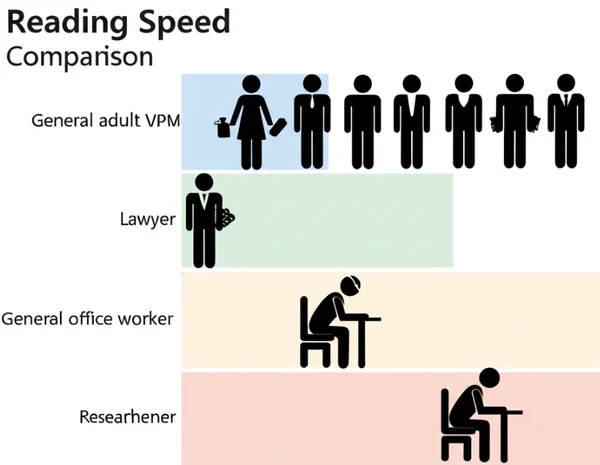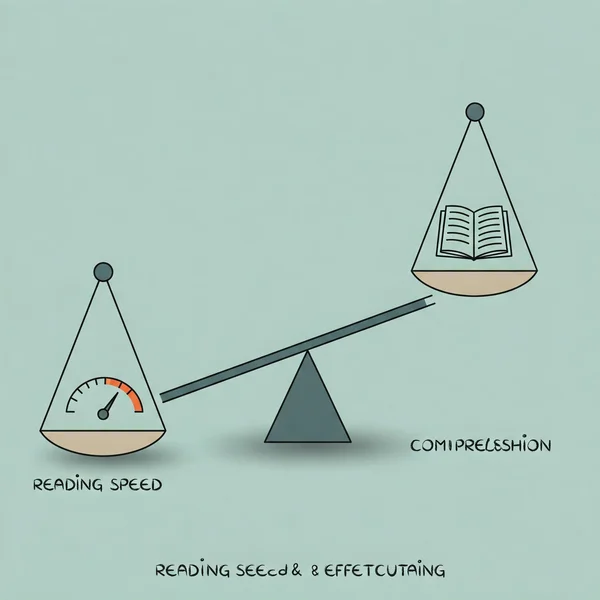Good Reading Speed: Benchmarks for Students & Adults
So, you've just taken a reading speed test, perhaps even our own comprehensive tool at readingspeedtest.net, and now you're staring at your WPM (Words Per Minute) score. The big question on your mind is likely: What is a good reading speed? Is your score fast, average, or could it use some improvement? Understanding where you stand is the first step towards enhancing your reading efficiency. This guide will provide you with clear benchmarks for students and adults, helping you interpret your average reading pace and determine what truly constitutes a "good" reading speed for your needs.
What is Considered an Average Reading Speed (WPM)?
How fast should an average person read? Before diving into specific numbers, it's important to understand that an "average reading speed" isn't a one-size-fits-all figure. It varies significantly based on several factors. When we talk about average read speed, we're generally referring to the typical number of words a person can read and comprehend silently per minute.
Defining "Average" in Reading Performance and WPM Metrics
The term "average" in reading performance is a statistical mean, often cited in educational studies and literacy research. Your WPM, or words per minute, is the primary metric used to quantify this. However, simply reading words quickly isn't the goal if comprehension is lost. A true measure of reading ability considers both speed and understanding. Many people wonder about the average reading rate and how they compare.

Key Factors Influencing Individual Reading Rates
Several elements can impact your reading rate. These include:
- Age and Education Level: Reading skills develop over time and with practice.
- Text Complexity and Familiarity: Technical jargon or unfamiliar topics naturally slow readers down.
- Purpose of Reading: Are you skimming for gist, studying for an exam, or reading for pleasure? This affects your
reading words per minute testoutcome. - Reading Environment: Distractions can significantly lower your WPM.
- Individual Differences: Natural aptitude, vocabulary size, and even eyesight play a role.
Knowing these factors helps in understanding why your wpm test reading score might fluctuate.
Reading Speed Benchmarks for Students (WPM Focus)
For students, developing a solid reading speed is crucial for academic success. What is a healthy reading speed at different educational stages? Here are some general guidelines, keeping in mind that these are approximate and can vary:
Elementary School Reading Speed Averages (Approx. WPM)
At this foundational stage, the focus is on building fluency and basic reading comprehension.
-
Grades 1-2: Around 50-100 WPM.
-
Grades 3-4: Typically 100-150 WPM as
reading practicebecomes more common. -
Grade 5: Often aiming for 120-180 WPM. It's common for parents and teachers to look for a
reading level testto assess progress.

Middle School Reading Speed Expectations (Approx. WPM)
As students encounter more complex texts, their average reading pace should increase.
- Grades 6-8: Generally, students read between 150-250 WPM. The complexity of
reading comprehension passagesincreases.
High School & College Student Reading Speed Norms (Approx. WPM)
Higher education demands efficient reading of large volumes of material.
- High School (Grades 9-12): Averages can range from 200-300 WPM.
- College Students: Often need to read at 250-350 WPM or even higher for effective study, especially when dealing with dense academic
reading passagecontent. Afast reading testmight be beneficial for them.
Discover your current reading speed by taking our online reading speed test.
Average Reading Speed for Adults and Professionals (WPM Insights)
Once formal education is complete, reading speed for adults can vary widely. How quickly do most people read in their daily lives or professional roles?
Typical WPM for Adult Readers in General Contexts
The average reading speed for most adults reading fiction or non-technical material for pleasure is around 200-300 WPM. This allows for good comprehension and enjoyment. Some might wonder, how many words per minute is considered proficient for daily tasks.

Reading Speed in Professional Settings: Does it Vary by Career?
Yes, significantly. Professionals who need to process large amounts of information quickly (e.g., lawyers, researchers, editors) often develop higher reading speeds, sometimes exceeding 400-500 WPM with good comprehension. Others might not require such a high words per minute reading rate for their job. The demand for speed reading varies greatly.
Is My Reading Speed "Good"? Beyond the WPM Numbers
So, you have your WPM score and you've seen the benchmarks. Is 300 WPM good? Or perhaps you scored 400 WPM and wonder if that's impressive. The answer is: it depends. A "good" reading speed is one that allows you to achieve your reading goals effectively and efficiently.
The Critical Link: Reading Speed vs. Comprehension
It's crucial to remember that speed without understanding is pointless. The comprehension reading comprehension aspect is just as, if not more, important than your WPM. If you're blazing through text but can't recall or understand what you've read, your effective reading speed is actually much lower. Our reading speed test at readingspeedtest.net also measures comprehension for this very reason.

Setting Personal Reading Goals Based on Your Needs
Instead of solely focusing on average read words per minute, consider what you need to achieve.
- Are you a student needing to get through textbooks faster?
- A professional wanting to stay on top of industry news?
- Someone who wants to enjoy more books in their free time?
Your personal "good"
reading speedwill align with these objectives.
When a "Slower" Speed Might Actually Be Better
There are times when a slower reading wpm is more appropriate. When tackling dense, complex material, or reading for deep analysis or memorization, slowing down to ensure thorough understanding is far more beneficial than rushing. A reading comprehension test on such material would reveal this.
How to Use WPM Benchmarks & Reading Speed Comparison Effectively
Understanding these benchmarks is a great starting point. How do I check my read speed and make sense of the wpm comparison?
Using Our Reading Speed Test Results
After taking an online reading speed test, compare your WPM and comprehension score to the benchmarks relevant to your age group and reading purpose. This gives you a clearer picture of where you stand. Remember, it's a snapshot, and your test reading speed can improve.
What If Your Speed is Below Average for Your Group?
If your reading rate is lower than you'd like, don't be discouraged! It simply means there's an opportunity for improvement. Many factors can contribute, and there are numerous techniques to help you read faster and enhance your reading comprehension practice. We offer resources and further tests to help you on this journey.
Finding Your Optimal Reading Pace for Success
Ultimately, a "good" reading speed is subjective and tied to your individual needs and goals. While average reading speed benchmarks provide useful context, the most important thing is to find an optimal pace that allows you to read efficiently and effectively, with strong comprehension. Whether you're a student aiming for better grades or a professional looking to boost productivity, understanding your current reading speed test results is the first step.
Ready to see where you stand or track your improvement? Take our free reading speed test now! What are your reading goals, and how do these benchmarks help you? Share your thoughts in the comments below!
Your Questions on Reading Speed Benchmarks Answered
-
What is a good WPM for my specific age (e.g., 10-year-old, 30-year-old)?
A 10-year-old (around 5th grade) might aim for 120-180 WPM with good comprehension. For a 30-year-old adult, a
good reading speedfor general material is typically 200-300 WPM, but this can be higher for proficient readers or those who practicespeed reading techniques. The key is always to balance speed with understanding, which ourreading speed testat readingspeedtest.net helps you assess. -
Is 250 WPM, 300 WPM, or 400 WPM considered a fast or slow reading speed?
Generally, 250-300 WPM is considered a solid
average reading speedfor adults with good comprehension. A consistentreading speedof 400 WPM with strong comprehension is definitely above average and considered quite fast for most everyday reading tasks. Anything above that, especially when maintained with understanding, can be seen as animpressive reading speed. -
How does the average reading speed in the US compare globally?
While specific, directly comparable global statistics can be hard to consolidate due to linguistic and educational differences, the
average reading speedfor English readers in the US (around 200-300 WPM for adults reading non-technical material) is generally in line with proficient adult readers in other English-speaking countries. Factors like educational systems and literacy rates influence theseaverage reading ratefigures. -
If my WPM is lower than the benchmark, how can I improve it?
Don't worry! Many people can improve their
reading speedand comprehension. Start by regularly practicing with varied materials. Techniques like reducing subvocalization, using a pacer, and previewing text can help. Consistentreading practiceand using tools like our online reading speed test to track progress are key. We also offer articles with tips to enhance your reading skills. -
Does reading on a screen affect my average reading speed compared to print?
What slows down reading speed sometimes is the medium. Some studies suggest that people tend to read slightly slower (around 10-30%) on screens compared to print, and comprehension can sometimes be marginally lower. This can be due to factors like screen glare, text formatting, and the non-linear way people often consume digital content. However, as digital reading becomes more prevalent, these differences may lessen with practice and optimized display settings.